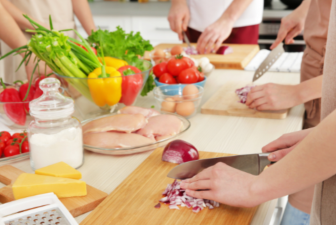What to Expect at Your First Cooking Class
Beginners learning to cook should first develop basic skills and knowledge, primarily focusing on understanding ingredients, using tools, controlling heat, hygiene and safety, and practicing simple recipes. This knowledge will help establish basic operating procedures, improve cooking efficiency, and reduce the risk of failure.
Beginners learning to cook should first develop basic skills and knowledge, primarily focusing on understanding ingredients, using tools, controlling heat, hygiene and safety, and practicing simple recipes. This knowledge will help establish basic operating procedures, improve cooking efficiency, and reduce the risk of failure.
Introduction to Basic Tools and Ingredients
Before you begin learning to cook, you need to prepare some basic tools and ingredients. For example, a kitchen knife, cutting board, pots, bowls, ladles, basins, oil, salt, sauce, vinegar, etc. These tools and ingredients form the foundation of cooking and will help you master the preparation of various dishes.

Introduction to Cooking Techniques
- Cutting Techniques
Cutting vegetables is one of the fundamentals of cooking. For beginners, choose vegetables that are easy to cut, such as tomatoes, cucumbers, and carrots. When cutting, keep your hands steady on the cutting board and cut vertically downward with the knife. Avoid shaking your hands to avoid injuring your hands.
- Stir-frying Techniques
Stir-frying is one of the most common cooking techniques. When stir-frying, pay attention to controlling the heat and the amount of oil used. For beginners, choose some easy-to-cook vegetables, such as greens and bean sprouts. Stir-fry them in oil first, then add salt and seasonings as needed.

Understanding and Handling Ingredients and Seasonings
Ingredient Classification and Characteristics:
Understand the texture, taste, and cooking methods of common vegetables, meats, and seafood. For example, leafy vegetables are suitable for stir-frying, while root vegetables can be stewed. Chicken breasts cook easily but can become tough, so the heat needs to be controlled. Fish requires different preparation methods based on freshwater and saltwater.
Kitchen Hygiene and Food Safety
Ingredient Storage Standards:
Store raw and cooked food separately. Refrigerate meat for no more than two days. Avoid soaking leafy vegetables in water for extended periods. Understand common signs of spoilage (e.g., slimy meat and the egg float test).
Hygiene Tips:
Wash your hands after handling raw food before handling cooked food. Use cutting boards according to the raw and cooked food categories. Boil and disinfect dishcloths regularly to prevent cross-contamination.
